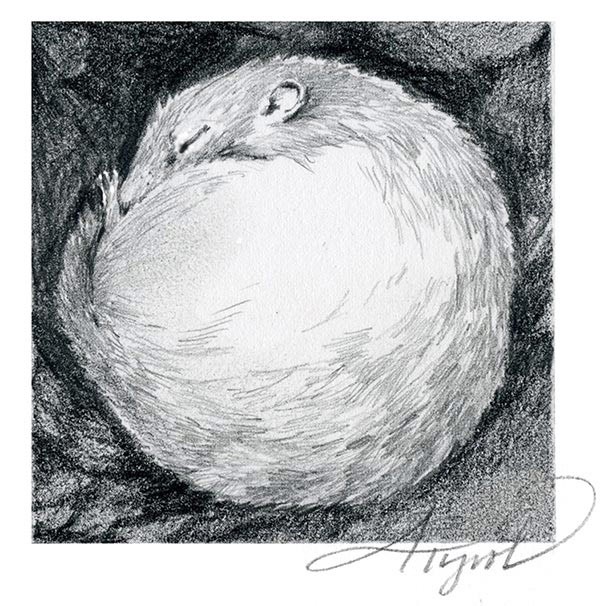
Fat gets a bad rap in the medical world, for good reason. Excessive body fat is linked to a litany of health risks, including diabetes, heart disease, high blood pressure, and stroke. Yet in the realm of nature, fat is a lifesaver. If certain mammals that hibernate did not get fat, they would be dead by spring.
The woodchuck is something of a fat specialist. As many an irate gardener can attest, the woodchuck’s diet consists of perishable greens. Because these can’t be stored, the animal stockpiles all the food energy it needs to survive winter in a thick layer of body fat.
Between spring, when a woodchuck first emerges, and late fall, when hibernation begins, the woodchuck doubles its body weight. Every day that it can eat without interruption improves its survival prospects. (For this reason, live trapping and relocation of woodchucks may doom them, as they will have to spend a lot of time and energy getting established in a new territory. The stress of moving and disruption of feeding can easily result in more loss of fat than animals can replace.)
As winter approaches, the woodchuck excavates a burrow that reaches deep underground below the frost line. Unlike the rambling summer burrow that has at least two entrances (main entrance and emergency exit), the winter burrow has only one. The woodchuck enters hibernation sometime in October, curling up on a bed of grass and sealing the entrance to its winter burrow with dirt.
Full hibernation is more than mere sleep. Body processes grind virtually to a standstill. Heart rate slows from 80-95 to about three beats a minute. Breathing slows to one breath every few minutes and body temperature drops to a few degrees above burrow temperature, about 40 degrees. It is remarkable – and baffling to scientists – that these changes do not result in death, since a normal mammal heart stops beating at 50 to 70 degrees.
Only 10 percent of the fat stores are burned while the woodchuck is in a deep hibernation state. However, there is periodic awakening every ten days or so. The animal’s body heats up, heartbeat and breathing return to normal levels, and the animal becomes alert. There are various theories as to why arousal is necessary. One is that hibernation is not true sleep, and the brain requires periods of sleep in order to maintain itself. So, paradoxically, woodchucks may wake up to sleep.
Another theory is that this return to normal metabolism is needed for immune system function. Woodchucks often harbor bacteria associated with pneumonia, and suffer from high incidences of this disease by the end of winter, most likely from the stale air in the burrow. Whatever the reason, awakening during hibernation must be essential, as it represents a significant energy investment. Approximately 90 percent of the fat stores are burned during these periods.
What causes hibernation? Apparently not seasonal clues, since captive woodchucks kept indoors and given supplemental light still get fat and go into hibernation. Interestingly, a crude extract from the blood of hibernating woodchucks caused non-hibernating woodchucks to begin hibernating. The mystery blood compound has provoked mind-boggling visions of human hibernation during intergalactic space travel. However, so far, all attempts to isolate the compound have been unsuccessful.
Despite their diligent preparation, many woodchucks die in hibernation. While running out of fat does not seem to be the direct cause of death, it is known that fatter woodchucks survive better. First-year woodchucks have higher mortality rates than older woodchucks, and the youngsters with the highest mortality are the ones born latest in the year. Being underweight is thought to make them more susceptible to winter diseases.
Awareness of the woodchuck’s winter survival challenges may help us forgive their rampages through the summer garden. What looks like gluttony to humans is in fact merely sensible eating behavior for animals who fast all winter. While many of us may now be regretting a holiday food binge, chances are that no woodchuck has ever worried about being too fat.

